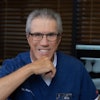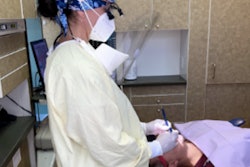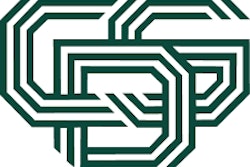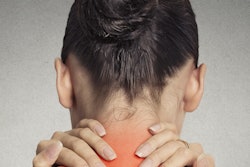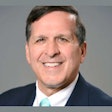
CHICAGO - Practicing good ergonomics in dental offices can preserve the longevity of your dental career, according to a presentation at the 2015 Chicago Dental Society Midwinter Meeting. Being mindful of your working techniques can enhance your dexterity and preserve your strength while avoiding neck and back problems.
The well-attended, hands-on workshop by Judy Bendit, RDH, stressed how important good posture and good equipment are to make the clinical experience more effective. Bendit, a faculty member at the Temple University Kornberg School of Dentistry, joked that she was "born and raised in a dental office," because her father was a dentist and her mother was a hygienist. In fact, she's been a hygienist so long, she recalled the days when dentists used foot-pedal, belt-driven rheostats to power handpieces. "You used to get your hair caught in them," Bendit laughed.
Ergonomics, the science of matching jobs to workers, began when the military started designing cockpits so that pilots could reach their instruments more easily.
The problems for dentists and hygienists alike are the slouching, reaching, and contorting that they do all day long when working on patients. Grumpy patients and old chairs also take their toll on dental professionals, Bendit noted.
More than 70% of dental professionals miss work because of musculoskeletal injuries, she noted. And a survey found that 93% of hygienists reported job-related back and neck pain, she added.
The most prevalent problem is carpal tunnel syndrome. Physical therapy, therapeutic massages, and chiropractors can help alleviate the pain. In fact, some California insurers cover two massages per month for dental professionals, according to Bendit. Doing simple stretching exercises throughout the day also can help, she said. Yoga and getting seven to nine hours of sleep can play a part as well.
Bendit said she was getting numbness in her fingers from her work, the result of a sebaceous cyst in her armpit. A lot of her friends have been forced to stop practicing as a result of work-related injuries, she noted.
The No. 1 reason for work-related problems among dental professionals is poor posture, according to Bendit. The repetitiveness of the work, the vibration of equipment, and the manual force of pinching instruments also cause problems.
Squeezing rubber balls doesn't help, but doing hand stretches such as tendon glides do, she said. Instead of stretching for things, which compresses the spine, she suggested rotating your chair or getting up to reach what you need. Doing flexions and wrist extensions can avoid carpal tunnel syndrome, Bendit said.
Equipment
When buying equipment for the office, Bendit recommended consulting the people who will use it, instead of office managers. A lot of equipment was designed in the 1950s, when dental professionals stood most of the time during procedures. In 1958, manufacturers began making specially designed chairs for dental professionals to sit in while working on patients, according to Bendit.
"The equipment you use is vital to what you're doing," she pointed out. She sometimes works in a Florida dental clinic that treats low-income people, but the chair is so bad, her back hurts at day's end, Bendit explained, so she's thinking of bringing her own chair to avoid the problem.
And when instruments aren't sharp enough, you're forced to pull and push too much, she said. "The most important thing is having sharp instruments, or you can't do your job," she stressed.
Dendit distributed a variety of newly designed instruments and mouth models so those attending the session c
“Discuss how to improve ergonomics in the practice. Figure out what works, what doesn't, and how to fix it.”
"Discuss how to improve ergonomics in the practice," Bendit recommended. "Figure out what works, what doesn't, and how to fix it." Taking pictures of colleagues helps them see how to improve their posture, she said.
Bendit strongly suggested practitioners should buy their own instruments, noting that most wear out within a year. The best clinical results for teeth cleaning are from a combination of hand instruments and ultrasonic cleaners, she said. Instruments with large diameter handles are easier to control and reduce muscular hand cramps, according to Bendit.
"Pick the instrument to do the best job, not necessarily the ones you were taught to use in school," she said. "It's very important to sharpen your instruments. You're going to work harder and hurt yourself if they're dull."
Extra-rigid curettes are particularly good for removing heavy calculus deposits, she recommended. Diamond tech scalers use diamond flecks that are especially useful for removing heavy deposits.
When seated, your knees should be positioned below your hips, Bendit said. When you bend forward, the weight of your head increases the pressure on your cervical vertebrae from 12 lb to 42 lb, she explained. "That's why we hurt!" she exclaimed.
Saddle-sitting designed chairs (like sitting on a horse) preserve your spinal curves even when you lean forward to work, Bendit noted. They force you to sit better, prevent slumping, and provide a more balanced, relaxed stance.
"Get yourself comfortable, bring your patient's mouth near your heart, and work without stretching, straining, or reaching," she advised. "To do your job, you both have to be comfortable. You've got to get the patient down lower so you can do your job."
Everything should be within a 15-inch reach, Bendit said. If it's not, get up, but don't reach.
Specially designed neck pillows can also help position patients for better access to their mouths, she noted, especially when working on the lower anterior and maxillary arch.
Using loupes also helps dental professionals to sit properly while reducing upper body and neck stress. Many hygienist schools now require them, Bendit noted.
Even gloves can cause problems. More than half of dental professionals report hand fatigue. Ambidextrous gloves can cause pain, so she advised using specially designed right- and left-handed gloves.
In addition, companies now make a range of products to help, Bendit noted, including hands-free, voice- and foot-activated periodontal charting systems. For better suctioning systems, Blue Boa, Isolite and Hager make efficient devices that combine mirrors, evacuation, and retraction. Minnesota retractors also are very good, she said. Right-angle probes help with patients who don't like to open their mouth wide enough.
Finally, regarding tooth polishing, Bendit said: "Select the appropriate polishing agent to use on a particular patient and surface."


